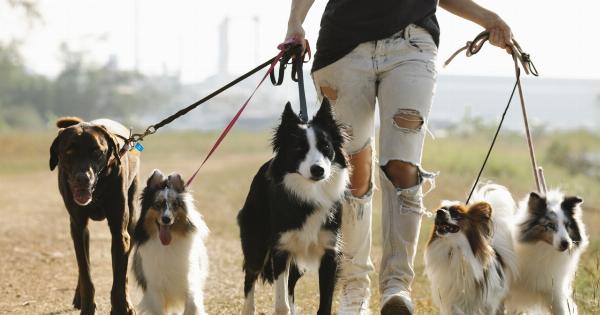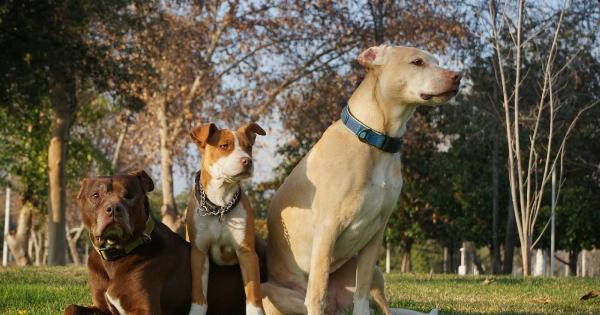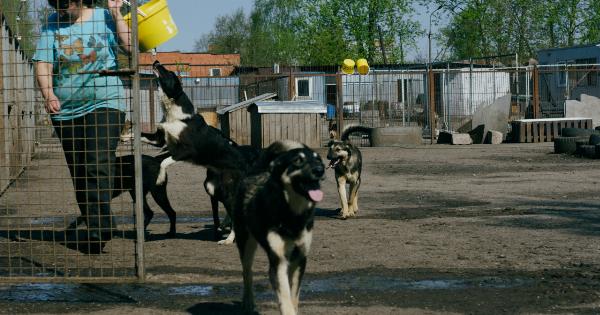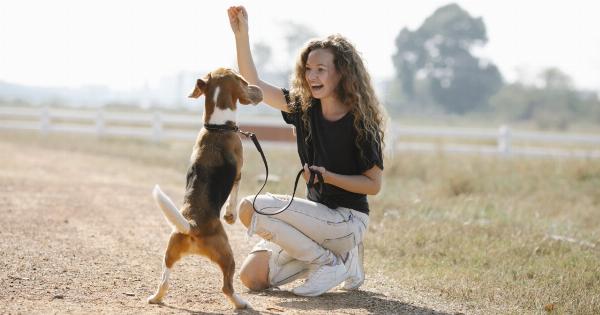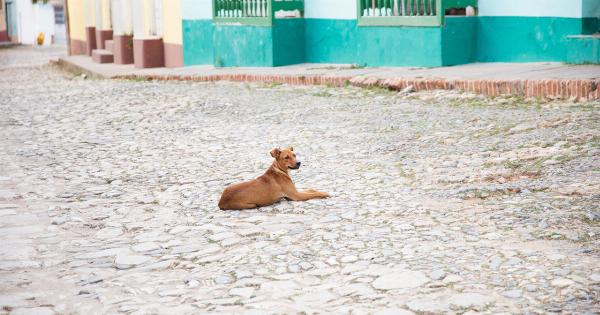Aggression in dogs can be a challenging behavior to address, but with the right knowledge and training techniques, it is possible to manage and modify this aggression.
It is crucial to remember that aggression is a natural instinct in dogs and can often be a result of various underlying factors such as fear, territoriality, or frustration. In this article, we will discuss how to make aggression your dog’s middle name by employing effective training methods and understanding your dog’s behavior.
Recognizing the Signs of Aggression
Before delving into ways to make aggression your dog’s middle name, it is essential to recognize the signs of aggression. These signs can vary from subtle body language to overt displays of aggression:.
1. Growling: This low, guttural sound is often an indication that your dog is feeling threatened or uncomfortable.
2. Bared teeth: When a dog exposes its teeth, it is a clear indication of aggression and a warning sign.
3. Snapping or biting: Manifestations of aggression through snapping or biting can potentially cause harm to humans or other animals.
4. Raised hackles: When the hairs on a dog’s back stand on end, it signifies arousal, fear, or aggression.
5. Stiff body posture: A tense and rigid body posture often indicates a dog’s readiness to defend itself.
Consulting a Professional
If your dog displays aggression, it is advisable to consult a professional dog trainer or a veterinary behaviorist.
These experts can assess the underlying causes of aggression and provide you with a tailored training plan to address the aggressive behavior effectively. Aggression in dogs can stem from a variety of factors, including fear, lack of socialization, or a traumatic incident in the past. A professional will be able to help you identify the root cause and develop an appropriate training regimen.
Positive Reinforcement Training
Positive reinforcement training is a powerful tool when tackling aggression in dogs. This method focuses on rewarding desired behaviors rather than punishing unwanted ones.
By rewarding your dog for displaying calm and non-aggressive behaviors, you reinforce those behaviors and encourage your dog to repeat them. Positive reinforcement can be in the form of treats, praise, or playtime with their favorite toy.
However, it is crucial to note that positive reinforcement training alone may not be sufficient for dogs with severe aggression issues.
In such cases, seeking guidance from a professional who can provide more specialized training techniques is highly recommended.
Desensitization and Counterconditioning
Desensitization and counterconditioning are two techniques often used in tandem to address aggression in dogs. Desensitization involves gradually exposing your dog to the triggers that cause their aggression in controlled environments.
The exposure should start at a level that does not cause the dog to react aggressively and then gradually increase over time.
Counterconditioning involves changing your dog’s emotional response to the trigger that causes their aggression. This is achieved by pairing the trigger with something positive, such as treats or praise, to create a more positive association.
Over time, the trigger that initially caused aggression will elicit a positive response instead.
Management and Environmental Modifications
In addition to training techniques, managing your dog’s environment can play a significant role in preventing aggressive behavior. Some tips to consider include:.
1. Avoid exposing your dog to situations or environments that trigger their aggression.
2. Use a muzzle or a head halter when necessary, especially in situations where your dog may come into contact with other animals or people.
3. Provide a safe and comfortable space for your dog to retreat to when they feel overwhelmed or threatened.
4. Keep interactions with unfamiliar people or animals controlled and supervised.
Consistency and Patience
Addressing aggression in dogs requires consistency and patience. It is important to stick to the training plan developed by professionals and follow through with the recommended techniques.
It may take time for your dog to demonstrate positive changes in their behavior, so be patient and understanding during the training process.
Socialization and Obedience Training
Socializing your dog from a young age can significantly reduce their chances of developing aggressive behavior. Exposing them to different environments, people, and animals helps them become comfortable and confident in various situations.
Obedience training is also essential as it establishes a strong bond between you and your dog, making them more likely to follow commands and respond positively to your guidance.
Regular Exercise and Mental Stimulation
Ensuring that your dog receives regular exercise and mental stimulation is crucial. A tired and mentally stimulated dog is less likely to display aggressive behaviors out of boredom or pent-up energy.
Engage your dog in activities they enjoy, such as walks, puzzle toys, or interactive play sessions, to keep them physically and mentally stimulated.
Seek Support from Support Groups
Dealing with an aggressive dog can be emotionally challenging, and seeking support from others who have faced similar experiences can be invaluable.
Joining support groups or online communities dedicated to addressing aggression in dogs can provide you with a safe space to share experiences, learn from others, and gain emotional support.
Conclusion
Making aggression your dog’s middle name may not be a desirable goal, but understanding and managing aggression in dogs is crucial for their well-being and the safety of those around them.
By recognizing the signs of aggression, consulting professionals, employing positive reinforcement training, and implementing management techniques, you can help your dog overcome their aggressive behavior. Remember that modifying aggression takes time, consistency, and patience, but with the right approach, it is possible to create a positive change in your dog’s behavior.

